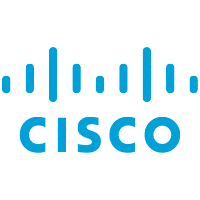Cisco and the Internet of Things

Cisco is in the middle of a large pivot from a network hardware company to a SaaS IoT company.
 Founded in 1984, Cisco Systems is a networking company that has traditionally focused on manufacturing network hardware such as routers and switches. Cisco went public in 1990, and began aggressively acquiring companies in the network services hardware and software industries, completing well over 40 acquisitions from 1990-2000 [1]. Reaching a peak market capitalization of $580 billion at the high of the dot-com bubble in 2000, Cisco became the largest company in the world for a time [2].
Founded in 1984, Cisco Systems is a networking company that has traditionally focused on manufacturing network hardware such as routers and switches. Cisco went public in 1990, and began aggressively acquiring companies in the network services hardware and software industries, completing well over 40 acquisitions from 1990-2000 [1]. Reaching a peak market capitalization of $580 billion at the high of the dot-com bubble in 2000, Cisco became the largest company in the world for a time [2].
The new millennium has been tough for Cisco, their market cap falling to around $150 billion in 2016 [3]. They have felt increased pressures from competitors, losing 30% of the router market (once its core business) to Juniper Networks [4]. They also tried and failed to enter the consumer end of the network devices market, first launching “The Human Network” campaign aimed at making Cisco a household name in 2006 [5], and then selling their consumer router subsidiary Linksys in 2012 [6].

In 2015, Chuck Robbins became CEO of Cisco and began restructuring the company once more. As he put it, “You have follow your convictions. You need to build a leadership team that you trust and that together are actually better based on their diversity and different thinking they bring to the game. [7]” Robbins has since worked to build enterprise cloud-based data analytics services, for example spotting errors in GM’s manufacturing robots before they become a problem [8]. As he explains, “The connectivity of that robot means absolutely nothing until you build the analytics capability [8].”
Robbins has led 15 acquisitions in the year since he took charge, investing heavily in the cloud and the Internet of Things. They have approached this from the industrial side instead of the consumer side, purchasing Jasper, an enterprise IoT company, for $1.4 billion this past February [9]. They have since then started using Jasper to move into emerging IoT markets, such as India, for example, where Cisco Jasper has launched UNLIMIT in partnership with Indian company the Reliance Group to help businesses leverage the Internet of Things [10].
These major shifts inside the company have resulted in thousands of layoffs from their hardware divisions and reduced earnings [11]. Cisco’s smaller ventures have shown growth, but the transition has not been smooth.
The future for Cisco depends on this transition from a network hardware company to an IoT services company. Cisco needs to bet big on the Internet of Things, and I think Robbins would agree. As he put it, “I do believe that this is bigger than the first wave of the internet. [12]” A recent Gartner Report predicts that in 2020 there will be 20.8 billion internet connected devices in the world [13], and Cisco predicts even more (50 billion [12]). There is a tremendous opportunity here, and the only question remaining is who will capture it.
I believe that Cisco should move into the consumer end of the IoT industry sooner rather than later, despite having failed once before. This time around, Cisco should not focus on becoming a household name. Instead they need to approach the consumer indirectly. They are already members of several consortiums that are trying to design “the language of the internet of things [14]”. Robbins says that the world is “moving too fast for anyone of us to do it all alone, [8]” but Cisco needs to lead that charge. Working with consumer product companies such as Nest, If This Than That, etc. Cisco should promise to connect everything in our lives. One or two companies will eventually be the backbone of all smart device communication and if Cisco is going to survive it needs to be one of them.
(615 words)
- http://www.fundinguniverse.com/company-histories/cisco-systems-inc-history/
- http://www.marketwatch.com/story/cisco-pushes-past-microsoft-in-market-value
- https://finance.yahoo.com/quote/csco?ltr=1
- http://www.networkworld.com/article/2210939/lan-wan/cisco-vs-juniper.html
- http://www.cisco.com/c/dam/en_us/about/ac49/ac20/downloads/annualreport/ar2006/pdf/ar_2006_complete.pdf
- https://www.bloomberg.com/news/articles/2013-01-24/cisco-sells-linksys-home-router-unit-to-belkin
- http://fortune.com/video/2016/06/28/cisco-ceo-leadership-style/
- http://fortune.com/2016/07/13/cisco-chuck-robbins-busy-year/
- http://www.cnbc.com/2016/02/03/cisco-wagers-14-billion-on-internet-of-things.html
- http://economictimes.indiatimes.com/tech/internet/reliance-group-cisco-jasper-partner-for-technology-venture/articleshow/55433096.cms
- http://www.wsj.com/articles/cisco-shows-signs-of-pressure-1479331039
- http://fortune.com/2015/10/05/cisco-chuck-robbins-internet/
- http://www.gartner.com/newsroom/id/3165317
- http://www.economist.com/news/technology-quarterly/21615067-more-and-more-devices-are-becoming-connected-will-they-speak-same



Lane, very nicely written. I agree that Cisco has to make this move or risk becoming irrelevant. The one downside I wonder though is do you believe the company will have to dramatically change its organizational structure (i.e. the makeup of teams, of leadership, of employees). Also, will the new business be able to sustain the fixed costs that comes with the hardware business. Also, do you think it is too late for Cisco or are they doing this at the right time? Finally, what does it mean approach the consumer indirectly as you suggest.
Agree with your point that they need to act quickly into IoT. I wrote about Intel but I see similar challenges that Cisco, GE, and Intel are all facing now. Everyone knows IoT is the future but it’s very difficult for hardware companies to transform into IoT solution providers (I wrote about more detail reasons in my post). However, I think focus on industrial rather than consumer because, 1st, industrial segment is where Cisco is traditionally strong at. When company is making changes, it’s important to identify and leverage its core competence. Secondly, the potential for industrial segment is actually much bigger. IC Insights predicts revenue from Industrial Internet of Things spending will increase from $6.4B to $12.4B attaining a 17.98% CAGR while the consumer segment is expected to only account for 6.7m.
I agree – if Cisco is going to continue in its present form, it must be among the companies with a sizable market share in smart device communication. However, I wonder if the company might hedge its bets by taking on consumer and industrial applications at the same time (both markets are significant as Bastiane points out above). After all, the advantage that large companies such as Cisco have over smaller ones in this space is that they have the resources to make multiple bets. Not to mention, there should be some cross-over between industrial and consumer IoT markets which would further streamline their business and give them additional competitive advantage as the industry develops.
IOT is the future as we all have mentioned. But the decision CISCO needs to take is vital whether to go for industrial or consumers. I believe that going forward IOT will have maximum impact on industrial especially Manufacturing and Health care.
http://www.mckinsey.com/industries/high-tech/our-insights/the-internet-of-things-sizing-up-the-opportunity
This article from Mckinsey discusses opportunities for IOT in various segments.
A very nicely written post. As some of the previous posts have mentioned, I think that CISCO will need to clearly define its strategy for approaching both consumer or industrial applications for IOT technologies. I think there is reason to be concerned if CISCO primarily gambles on entering the consumer market. Specifically, major companies such as Google, Facebook, and Amazon are also making major investments in the consumer IOT space. Therefore, CISCO is setting up for battle against some of the most popular brands in the consumer tech space. Like CISCO, these companies have a lot of cash to invest, acquire, and market. Therefore, it seems more feasible for CISCO to target industrial SaaS IOT applications. As others have mentioned, the name CISCO carries much more weight for these types of applications. Either way, it will be fascinating to watch how IOT SaaS begins to change the lives of businesses and consumers.